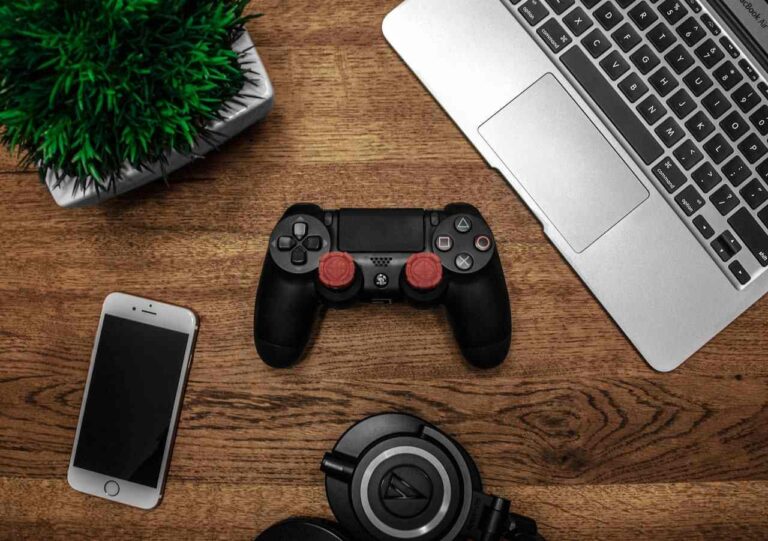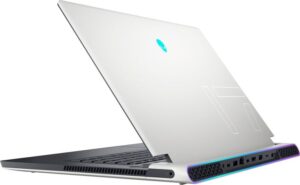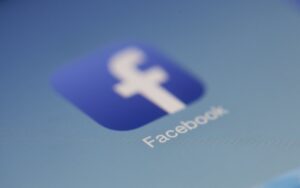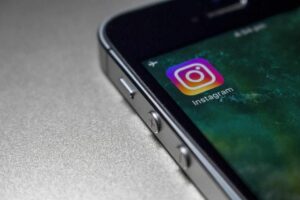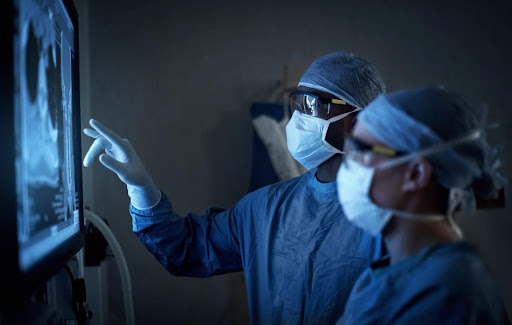
Technology has had a huge impact on how nurses and hospitals operate. Innovations such as automated IV pumps, wearable trackers, and electronic record keeping have made it easier for nurses in hospitals to track a patient’s progress while also allowing the patient to have a certain amount of autonomy over their own care. Technology has made it easier for nurses to spend more time on patient care than mundane administrative duties and keep the patient’s relevant health information in one digital file. With the population getting older, hospitals will be busier than ever, and technology makes it easier for nurses to assess patients more effectively and faster. New innovations have also made it possible for patients to search for the results of blood tests and other procedures online, so they don’t have to make another appointment to come in.
Some of the benefits of technology in the field of nursing include improved accessibility with electronic health records, a reduction in errors in care and medication dispensing, increased communication, and more effective preventative care.
Technology Makes Healthcare More Accessible
New technologies in digital record-keeping have made records and medical histories more accessible for nurses, which makes their workload easier. Nurses and other hospital staff no longer must go hunting for recent records of patients and work to check the accuracy of the records they have. Digital record-keeping and data analytics can make the patient’s full history accessible with a few keystrokes. When more healthcare organizations jump on the electronic records bandwagon, everybody’s health histories will be accessible to any doctor or nurse, reducing the risk of mistakes in their care.
Technological advancements have also made healthcare more accessible to patients and their families by allowing them to see their results or using online applications to make follow-up appointments. This accessibility is especially important for those patients who live in rural areas or have a disability that prevents them from moving around too much. Patients can now access their test results or request a requisition electronically for blood tests or a urinalysis and get them done in a convenient location. The doctor or nurse can then speak with the patient online rather than having them go through the irritation of arranging a way to get to the hospital in person.
Decrease the number of errors in patient care
Human error is inevitable in any profession, and nurses are no exception. Those medical professionals who work long shifts or are spread thin due to understaffing can make mistakes due to fatigue or distraction, and these mistakes can sometimes be dangerous. Technologies such as automated IV pumps can be set to administer the medication to the patient at a specific time, so the nurse does not have to worry about remembering when and how much should be given. The less an overworked nurse needs to remember to do, the better for all who benefit from the extra attention and patient care.
Increase communication
Technology allows medical teams easy access to each other for communication without having to schedule a time when everyone can be in the same room. Software applications that provide instant messaging, team collaboration tools, and network tablets help staff communicate faster. This is especially handy when there is a shift change and patient information needs to be shared with the new shift. These are also great tools to use to share pertinent health information with a wide range of people at the same time without having to track down each one separately or send mass emails that can be time-consuming and not looked at until later. Technology also allows nurses and other medical staff access to teaching seminars, workshops, and medical databases and share the information with their colleagues immediately.
Provide better preventative care
With innovations such as smart beds, wearable trackers, and portable monitors, nurses can check on a patient’s vital signs without being in the same room with them. If any vital signs are off, then a warning bell will go off on the device to signal to the care provider that the patient needs to be checked on. In this way, no time is spared in getting the patient the help they need and preventing symptoms from growing into more serious problems. Many patients suffering from recurrent illnesses end up at the hospital again and again because there is not any consistency in treatment plans. With electronic record keeping, the patient’s information is all in one place, and an individualized plan can be created so the patient can deal with simple symptoms on their own at home rather than making a trip to the hospital.
Nurses who work in hospitals that are technologically advanced have a leg up on their counterparts in remote areas without adequate access to technology. For those nurses who are ready to move up in their careers and want to know how to become a family nurse practitioner, having experience in different technologies for healthcare will help them in their studies as well as make them stand out in their placements. Accredited schools such as Texas Woman’s University understand that technology will play a bigger role in healthcare in the years to come and want to make sure their students are ready for the future.
Telehealth
Due to a serious shortage of nurses in the United States, it has become harder for some patients to access the help that they need. Telehealth has significantly improved nursing by providing more opportunities for remote care, patient education, and monitoring. With telehealth, nurses can reach patients in remote or underserved areas, reducing the barriers to quality healthcare. Additionally, telehealth allows for more flexibility in care delivery, as nurses can communicate with patients via video conferencing or mobile devices, providing convenient access to healthcare services.
In addition to providing access to care, patient education, and remote monitoring, telehealth also improves nursing by providing new ways for nurses to interact with patients. Telehealth allows nursing professionals to communicate with patients outside of traditional clinical settings, which can lead to improved outcomes. For example, nurses can use telehealth tools to check in with patients who have chronic conditions, such as diabetes or heart disease, on a regular basis. It allows nurses to catch potential problems early and intervene before a situation becomes critical.
Telehealth can also help reduce healthcare costs by allowing nurses to provide remote care. This means that nurses can avoid the costs associated with in-person visits, such as transportation and overhead costs for clinics and hospitals, and reduce the need for hospital readmissions.
Along with these benefits, telehealth also allows nursing professionals to collaborate with other healthcare providers in real time, which can improve communication and patient outcomes, and reduce duplication of services, leading to better access to care.
Overall, the benefits of telehealth for nursing warrant its continued adoption and expansion. As technology advances and becomes more accessible, telehealth will undoubtedly continue to play a crucial role in nursing and healthcare delivery.
Wearable medical devices
Wearable devices are one of the fastest-growing markets in the United States, with sales reaching 231 billion by 2032. These devices can monitor a patient’s vitality on a regular basis and alert the wearer and the healthcare provider of any irregularities before they become a problem. Prevention and maintenance are the main goals for these devices, and rather than waiting for a yearly checkup or for symptoms to flare up, these devices will detect irregularities in vital signs.
Wearable technology that can provide instant data on the wearer’s health and send a warning in case of a major health event includes exercise trackers, calorie trackers, sweat meters, heart rate sensors, and oximeters. These trackers are fun and easy to use, providing the wearer with incentives and daily fitness goals to hit. This also gives the individual more control over their health and puts the onus on them to improve their lifestyle and diet. The information from these devices can also be useful in getting better insurance rates for those who suffer from chronic illnesses but are taking steps to improve their overall outlook.
Automated IV pumps
Automated IV pumps can be programmed to control the dosage given to patients throughout the day. These devices make it so the patient doesn’t need to wait for nursing staff to change their drip, and they ensure the timing is always accurate and the dosage is always controlled. These pumps can also be used for giving patients needed nutrition at specific times, as well as those that allow the patient to adjust their pain medication when they need it rather than wait for someone to come to their room.
These pumps also help nurses manage their time and speed up the process if the adjustment that needs to be made is imminent. The automated process of changing or adjusting medication means that there is no chance of error, and the patient is not waiting for vital medication. It also lets nurses focus on other duties without worrying about getting the medication to the patient on time. These pumps remove some of the stress from what is most likely an understaffed department.
Portable monitors
Portable monitors can help a nurse check vital signs without being in the same room as the patient, which helps them manage their time more effectively and reduce the need for invasive procedures. Other benefits of portable monitors include providing real-time data on patient vitals, which can improve accuracy and allow nurses to make more informed decisions about patient care. They can also be wirelessly connected to other devices, such as electronic medical records or other medical equipment. This can help nurses communicate more effectively with other healthcare professionals and quickly share important patient information.
Overall, portable monitors can play an important role in helping nurses provide better care by improving mobility, accuracy, communication, and patient experience. Portable monitor equipment allows nursing professionals to check on patients even if they’re on the move or busy helping someone else. Portable devices monitor vital signs like ECG, respiratory rates, and oxygen saturation while transmitting the information back to a central monitor. This means that nurses will get an alarm notification if there’s an emergency.
Smart beds
Smart beds are vital in helping nurses maintain important data on patients, such as movement, vital signs, and weight. They are also designed to keep patients safe during hospital stays by issuing an alarm if the patient falls out of bed or tries to get out of bed. This can also reduce recovery time for patients because they are less likely to injure themselves. Smart beds let nurses monitor what is happening with the patient at all times, whether they are in the same room or not. They can identify any health patterns that might lead to a fuller understanding of the patient’s condition. These beds save nurses valuable time because they don’t need to keep visiting the patient to fix equipment or adjust supplies.
Smart beds can also be designed to eliminate bedsores by redistributing pressure based on the patient’s position. This helps prevent pressure ulcers from forming. Nurses can also use data from the smart bed to make adjustments to the patient’s position or pressure redistribution as needed. These beds can also be programmed to make automatic position changes for the patient, which can prevent pressure ulcers, which are a problem for patients who are bedridden.
Electronic health records
Electronic Health Records (EHR) replace the antiquated system traditionally used by hospitals for filing paper reports. This technology allows nurses to enter the data for a patient and retrieve patient records electronically in record time. These records can be accessed by the whole team, wherever they may be. This is very useful if there are changes that need to be made to a treatment plan immediately. Patients don’t need to wait for other members of the healthcare team to be on shift or check on other patients before seeing them. Data entered into EHRs is heavily encrypted with technologies such as blockchain, which makes it impossible for hackers to gain access to personal information.
EHRs can reduce the amount of time that healthcare team members spend on administrative tasks, such as filling out paperwork or looking for patient records. This can free up more time for patient care and other important tasks. They can also reduce the risk of errors or misinterpretations that can occur with paper-based patient records. This can help healthcare teams provide more accurate diagnoses and treatments.
Electronic health records improve collaboration with the healthcare team because they help them communicate more effectively with each other, even if they are not in the same location. They can access and share patient information more easily, which can help improve patient outcomes. These systems can also include alerts and reminders to help healthcare teams avoid potential errors, such as medication errors or missed appointments. They can also provide up-to-date information on patient conditions, allergies, and other important factors that can impact patient safety.
Final thoughts
Technology has forever changed the face of healthcare for the better. What was once a system that depended on routine tasks to be done by individuals is now full of innovations that can take a patient’s vital signs and administer medication without a person doing it. Technological advances in medicine help make health records more accurate and accessible, while wearable devices and smart machines can monitor and alert the medical team to any irregularities in a patient’s condition before they become a major health problem. Innovations in healthcare will only get better and allow nurses to spend more time in areas where they can provide the very best in patient care.

